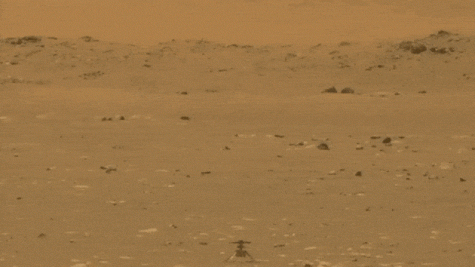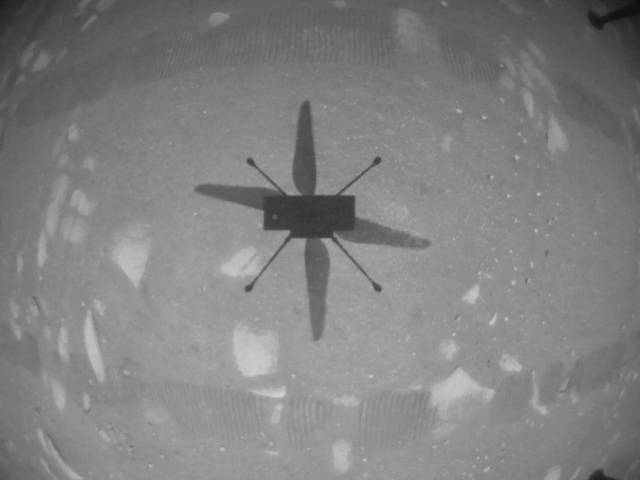First Successful Flight on Mars
Ingenuity, the Helicopter, Flew Successfully
April 30, 2021
Ingenuity took flight on the Red Planet on Monday, April 19. According to the National Aeronautics and Space Administration (NASA), “The Ingenuity team at the agency’s Jet Propulsion Laboratory in Southern California confirmed the flight succeeded after receiving data from the helicopter via NASA’s Perseverance Mars rover at 6:46 a.m. EDT” Although the flight was confirmed at 6:46 am, it took place at 12:33 Mars Time and 3:34 am Eastern Time.

The helicopter flew for approximately 40 seconds on Mars-CNN. The ingenious helicopter arrived on Mars’s Jezero Crater affixed to the Perseverance Mars Rover on February 18. “NASA rover Perseverance captured imagery of the flight….with one of its navigation cameras showing a sequence before, during, and after the helicopter’s flight,” according to CNBC. According to NASA, because Mars is so far away, Ingenuity’s flight could not be observed in real-time and was autonomous.
NASA states, “The first flight was full of unknowns. The Red Planet has significantly lower gravity – one-third that of Earth’s – and an extremely thin atmosphere with only 1% the pressure at the surface compared to our planet.” Flight on Mars is widely different from flight on Earth, which is why Ingenuity’s flight is significant. Thomas Zurbuchen (NASA Associate Administrator for Science) announced that the field on which the flight took place will be named “Wright Brothers Field” after the ingenious pair of brothers who invented the airplane.-NASA. MiMi Aung (project manager of the Ingenuity Mars Helicopter) said, “We have been thinking for so long about having our Wright brothers moment on Mars, and here it is,” according to NASA.
A sidereal day is how long it takes for a planet to rotate on its axis so the stars appear to be in the same location, and a solar day is the same but with the sun appearing in the same position. A sidereal day on Earth is 23 hours, 56 minutes, and 4.1 seconds, and on Mars, it’s 24 hours, 37 minutes, and 22 seconds. An Earth solar day is 24 hours long and a Mars solar day is 24 hours, 39 minutes, and 35 seconds.













